The perfect coyote bait pile is a marvelous tool for coyote hunters. Set up correctly, a coyote bait pile will lure in and hold coyotes exactly where you want them, convince them to consume the bait, and give you all the time you need to take your shot.
Coyote bait pile essentials: Bait, location, and time.
Your success baiting coyotes will depend on using the right bait in the right location and patiently waiting for the magic to happen.
Want to know when coyotes are the most active and most likely to show up at your bait pile or respond to your calls? Check out my article.
Looking for a great book on how to call in a coyote? Check out Andrew Lewand’s book below. This book answers the most frequently asked question on the internet… What sounds are working right now? No matter which brand of call you use, the sequences in each chapter with boost your success rate!
The right bait.
Honestly, nothing beats a deer carcass. It’s what coyotes expect to find dead of natural causes (or gunshot wounds) in the woods and fields. Indeed, it’s often discovered split open and mangled alongside the roadway. They consume it regularly and are naturally drawn to the familiar odor of its decay.
There may be other baits, and they may work, but deer meat is the superior choice.
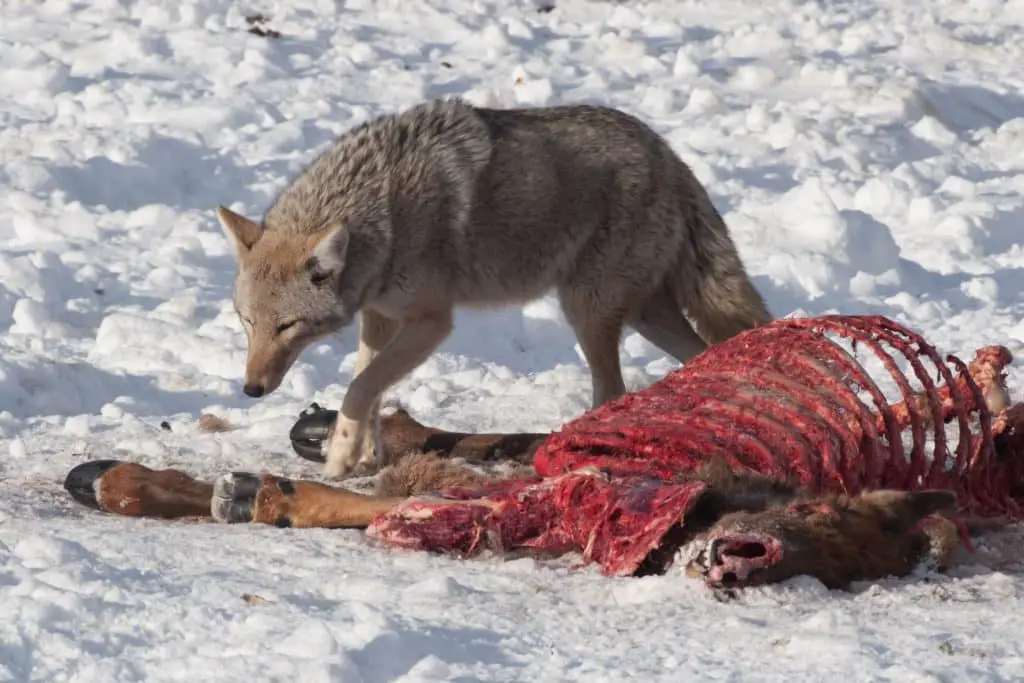
The perfect location.
Simply put, a coyote bait pile tucked just inside a woodline that provides the coyote with a sense of cover but is actually a shooting lane with you on the other end is the perfect location.
We’ll discuss how to set up this location later, but you can get a basic idea from this image.
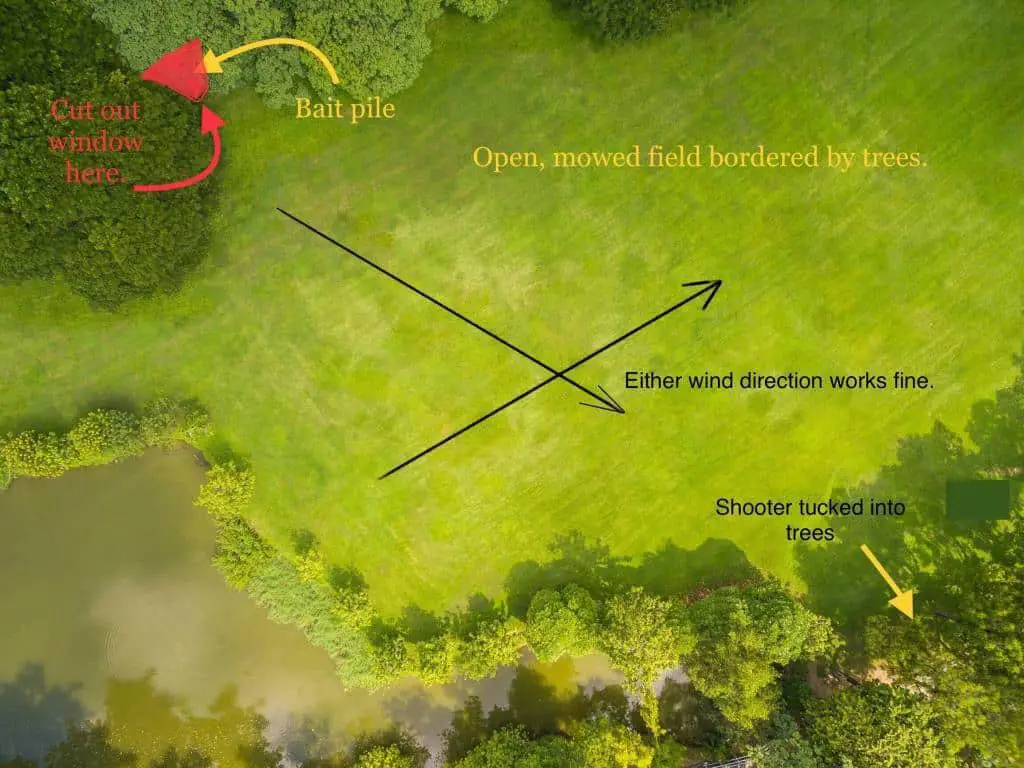
That’s far enough away to help you beat a coyote’s amazing senses.
All the time it needs.
The last piece of your perfect coyote bait pile is time. Time for the pile to ripen. Time for the pile to be found.
During the days and weeks after you have placed your bait, you will be sorely tested. Doubt will creep in and disturb your resolve. “Did I use enough meat?” “Is the pile too well hidden?”
Make a solemn vow as you walk away from your perfectly baited and placed pile. A vow to never, for any reason, disturb it. It’s a test of faith in yourself and the quality of the work you have done.
Avoid the temptation to commit the only unforgivable sin of baiting coyotes: Spilling fresh human scent on it.
Getting deer for your coyote bait pile.
There are three ways to get deer for your coyote bait pile. Here they are arranged in order of easiest to hardest.
From deer hunters.
If you hunt deer, you know a lot of flesh doesn’t get packed into freezer bags. So this season, let your deer hunting friends know you’d love to take home their scraps.
You can make a suitable sized coyote bait pile from a single butchered deer using the Baitsicle Method discussed later.
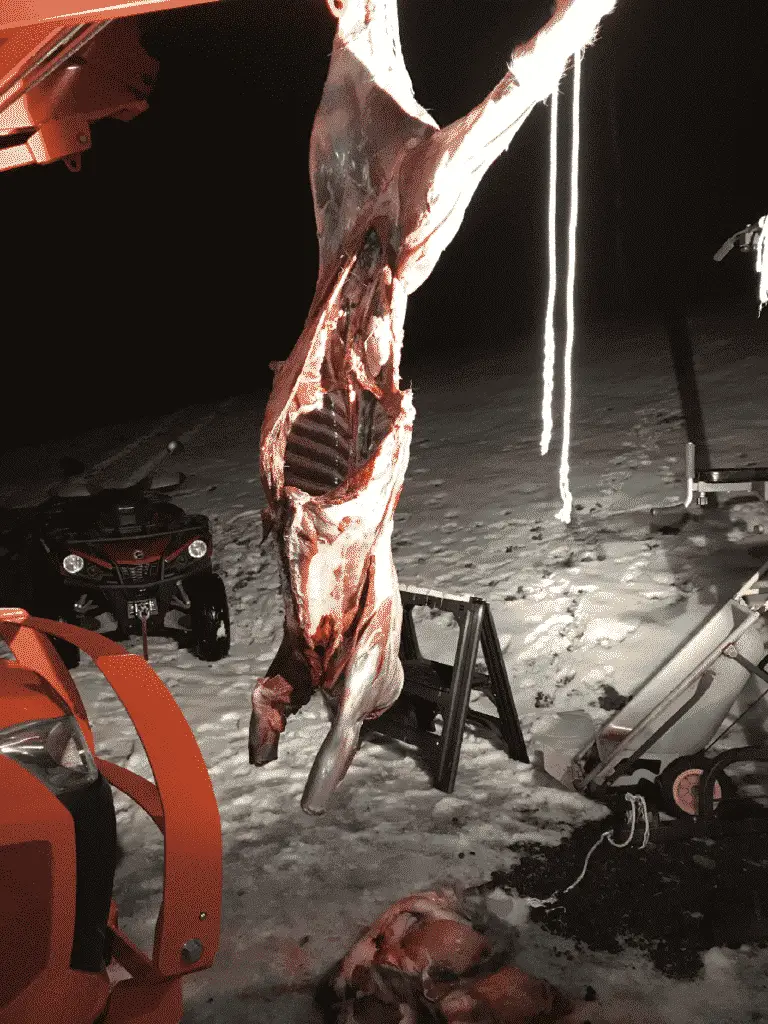
Deer processors.
Deer cutters, especially those who butcher your deer, are often more than willing to let you take as much of their waste as you can carry.
Brings some buckets and heavy duty contractor bags with you.
Roadkill.
I hesitate even to mention this method of collecting bait. However, because it is legal in some states, I’ll take the time to layout the easiest way to secure enough carrion from roadkill, but check your local laws and be very damn careful. A bad night could end with you being roadkill.
First of all, you only need one deer to make a coyote bait pile. You do not need 300 pounds, no matter what someone tells you. 50-75 pounds is perfect and will last the whole season.
Secondly, a doe in the back of your truck brings a lot less attention than a buck with a big rack in the back of your vehicle—police attention, that is. The law may be on your side, but you still could get arrested by a suspicious officer and have to spend money defending yourself. A dead doe is a tragedy. A dead eight-pointer is a trophy. Consider yourself warned.
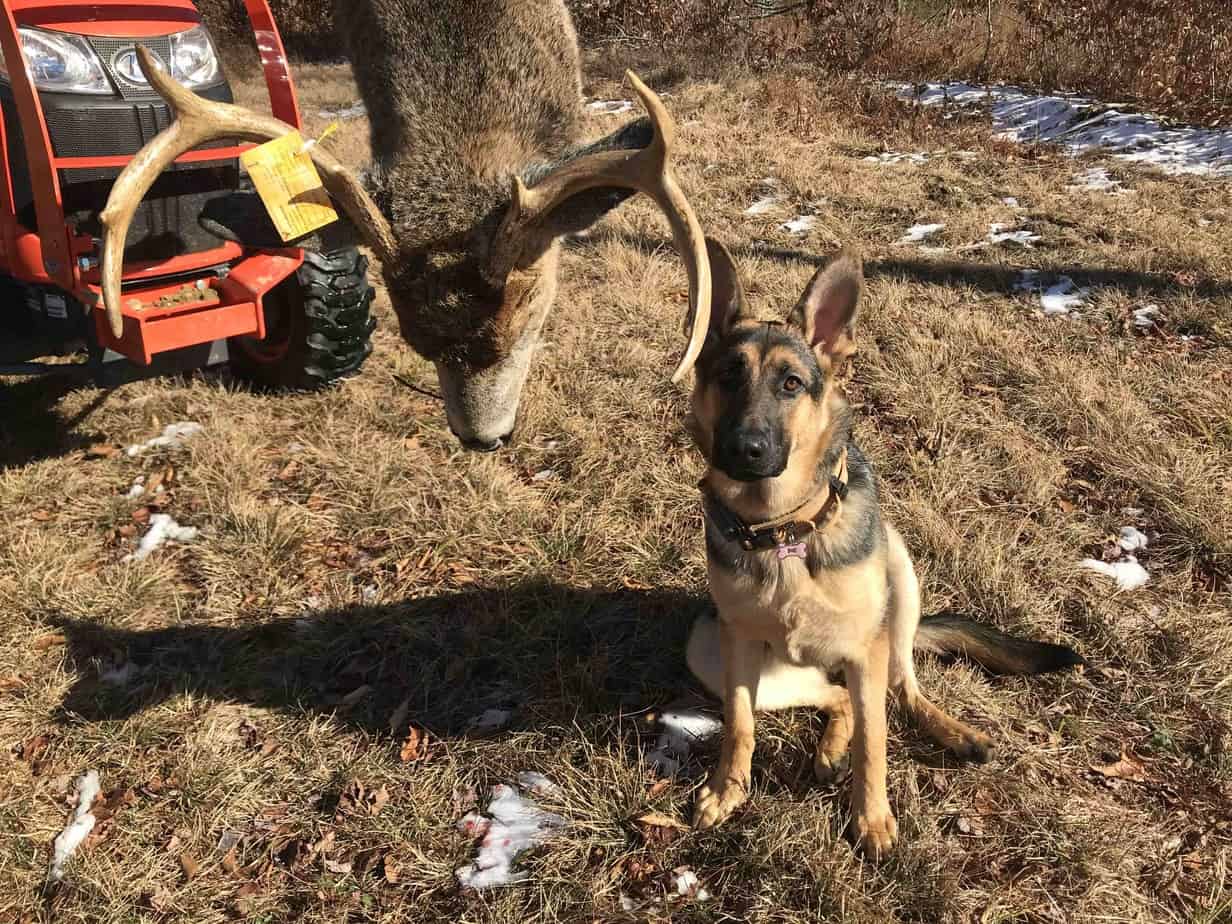
Roadkill tips.
Collecting roadkill is a significant job. You have to drive around sparsely traveled back roads (never attempt recovery on major routes), racking up quite a few miles before you’ll come across anything of value. Once you spot a possible candidate, I suggest you consider a few points before proceeding.
Is it in a safe location for collection after dark? At night, you’ll be able to collect when the traffic flow is at its lowest point. You will also be able to hear vehicles approaching and see their oncoming headlights. Night-time recoveries draw less attention from the general public, too. Think fewer 911 calls. After dark, you’ll have fewer flies to deal with, and you won’t have to drive off a murder of crows. However, a flashlight is required so you can be assured Mr. Bear isn’t already seated at the Roadside Cafe himself.
Is the carcass relatively intact? If the stomach is burst, the deer severely mangled or already badly rotted, take a hard pass on it. Lifting a dead deer into the back of a truck by yourself is a nightmare, to begin with. Don’t add to your impending misery by trying to handle anything dead for too long.
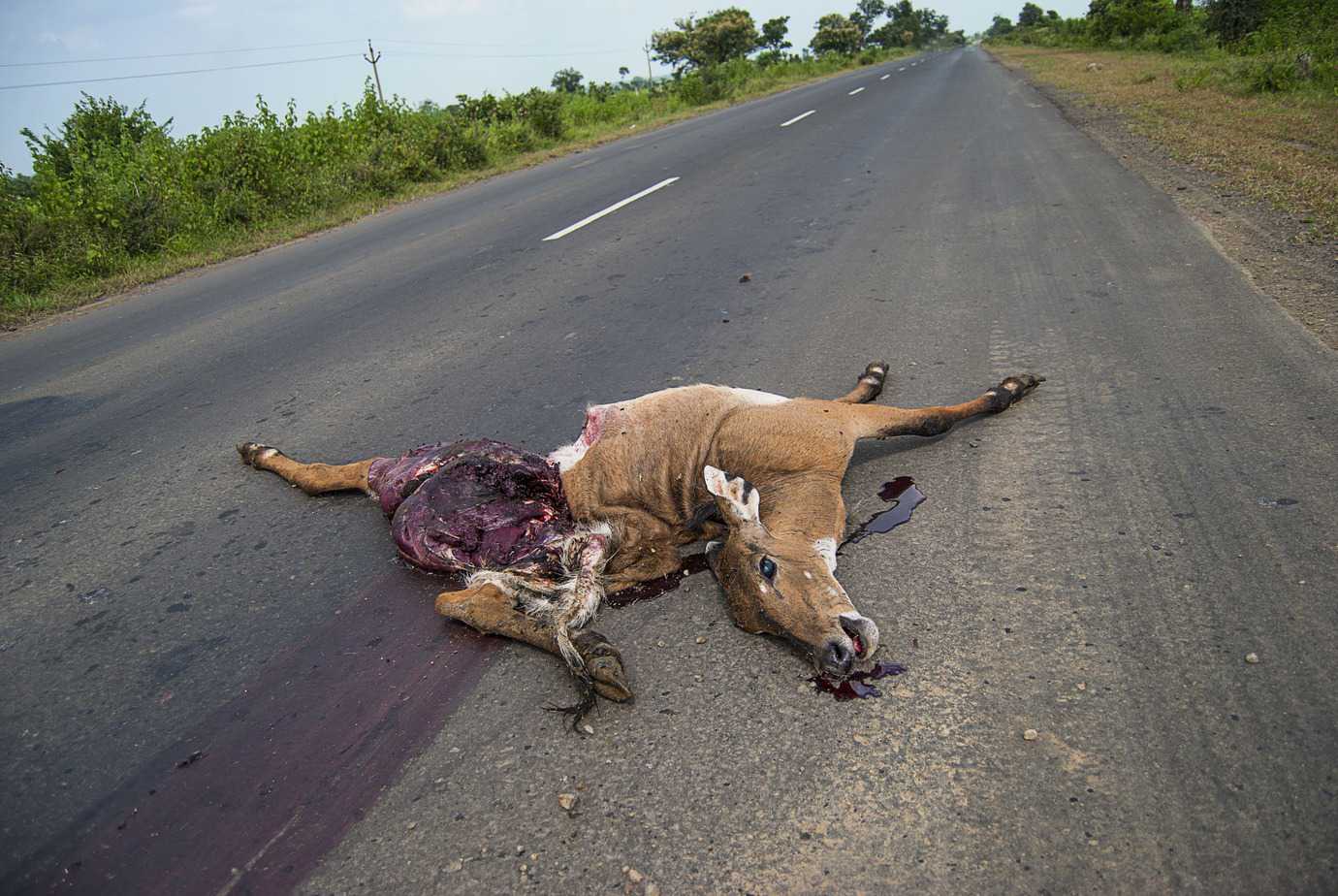
Bring rain gear. Never, ever recover roadkill in anything you’ll want to wear again. There’s just no way to do it without getting bloody and stinky. So bring a rain suit and gloves with you.
A bit of rope will ease (some) of your pain. Without a rope, your best bet is to grab the head, sit on your tailgate, and use your legs to push yourself backward as you lift the deer over the back of the truck. You’ll find another way to get deer for your bait pile next year.
If you have rope, you can tie up the head, stand on your tailgate, and lift and pull the head up and over the end of the truck. When you can grab the legs, you should be able to walk backward and pull the rest of the deer into the truck.
Types of coyote bait piles.
Baitsicles
The baitsicle is my favorite coyote bait pile for four reasons; easy to transport, requires the least amount of baiting material, draws repeated visits, and can be placed in nearly every type of location.
How to make a baitsicle.
You’ll need one five-gallon pail, 10 feet of rope, enough bloody deer scraps to fill 75% of the bucket, a hammer (to break the bucket if the bait sticks to it), and access to water.
Start by placing a few inches of meat on the bottom of the pail. Now, coil at least a foot-long section of rope on top of the flesh and cover the coil with more scraps. Next, slowly add water, making sure the meat holds the rope down. Once your bucket is about half full, you can add the rest of your bait, top off the water, and allow it to freeze.
Pro tip: Bloody is best. The pinker your water, the better. For an example of how bloody; check out these photos of how coyote trappers make their baitsicles.
Correctly done, you should have about 6 feet of leftover rope. You will use this to drag your baitsicle and anchor it in the field.
The baitsicle will weigh over 50 lbs, but frozen, it should be easy to pull over snow and rugged enough to survive being dragged over open terrain.
During each thaw and refreeze, more bait will be exposed for the coyotes to lick and gnaw on, providing each coyote with just enough to encourage repeated visits.
Pro tip: Drag your baitsicle around. You’ll leave a scent trail everywhere you go that leads predators directly to your bait.
Wait, do you live where the eastern coyote roams? Then you need to check out my article on Killing Giants.
Hay bales or compost piles in open fields.
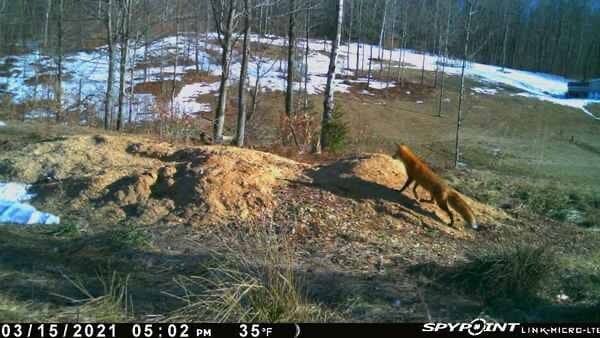
A compost pile in an open area is an insect and rodent luxury apartment. Over time, it will attract more and more predators like foxes and coyotes.
You can use a hay bale to create a min-compost pile for less than $20. So, don’t worry if you don’t own a farm or have access to large amounts of compost.
To begin, I’ll assume you are both reading this before the summer has ended, and you want to make a one-of-a-kind coyote bait pile with live rodents that even squeaks for you.
Your first step is picking up one or more 50 lbs compressed blocks of hay from a local supply store. Make sure you get hay, not straw. Mice and voles (your real coyote bait) love to nest in and eat hay.
Once you have selected a place to set your hay coyote bait pile, chop a hole about half the size of the bale and 6-10 inches deep.
Note: The smell of freshly disturbed earth often draws the attention of foxes and predators, so be prepared to hunt this spot shortly.
Fill the hole with corn and flip the bale over on top of it. Over time, the corn will be found by rodents, who will consume it and use the hay bale for nesting in and also feast on. Their movements, scent, and occasional squeaks will act as a living coyote bait pile that also draws in plenty of foxes.
Compost piles for coyote baiting.
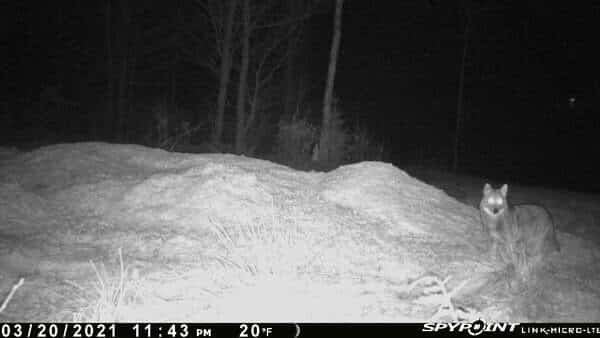
A compost pile that features pine shavings or other bedding materials taken from chicken coops and duck houses will often contain an ungathered egg and uneaten food pellets. This waste material will quickly draw insects and other scavengers. Fox and coyote are never far behind. This type of compost pile is a predator magnet, and therefore, a hazard if kept too close to livestock. I’ve seen predators visit my compost pile several times a week all year long.
Using cages for baiting coyotes.
Dead chickens, squirrels, and other small mammals placed in cages and secured to the site create mini coyote bait piles. Leave them uncovered, and you’ll be surprised how many critters stop by to check out the bait.
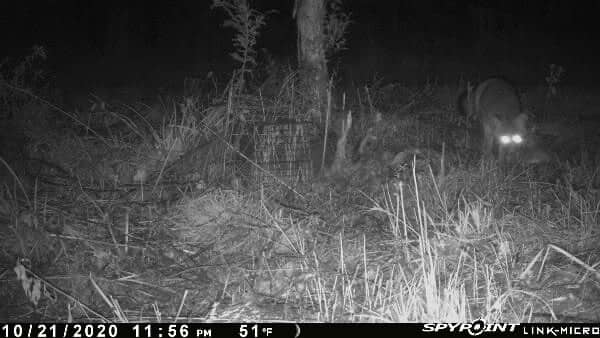
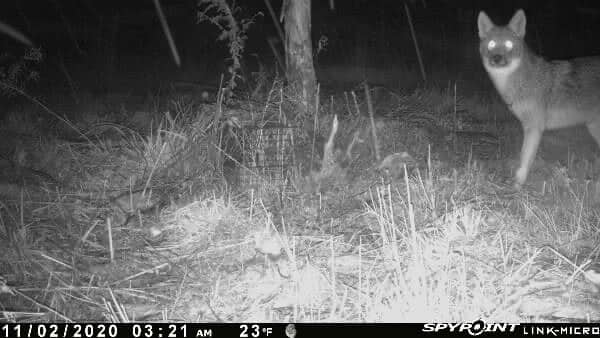
Pro tip: Hay bale, compost, and cage coyote bait piles work best in open, mowed fields that make good habitat for rodents.
Want to know what calls coyotes and foxes respond to the most? Is there a magic sequence other hunters use to bag coyotes? Read my article on calls here to find out the best calls.
The best location for a coyote bait pile.
The absolute best place for a coyote bait pile is just inside a woodline.
Set the pile 5-10 yards inside the woods and about 100 yards from your shooting location. You want your bait far enough in to calm the coyotes and give them a sense of cover. However, don’t go too far, as you’ll double or triple the amount of site preparation you’ll need to create a clear shooting lane.
Looking at the bait pile from your shooting stand, you should have just wide enough of a window to see any coyotes when they are within 25 feet from either side of the pile—this is also the perfect range for night shooting using the best thermal scope for new predator hunters.
Set the bait inside the middle of your shooting window and secure it to prevent movement by the coyotes. You can use a sapling but avoid wide tree trunks that could obstruct your view of the target or interfere with the path of your shot.
And don’t worry about ropes, tie-down stakes, or other exposed equipment used to secure the bait—it will lose any scent and be ignored by curious coyotes.
If you can’t secure your bait to an object, consider using an earth anchor.
Please note: If you use a link I provide to make a purchase, I get a small commission at no extra charge to you. Thanks for helping support this page!
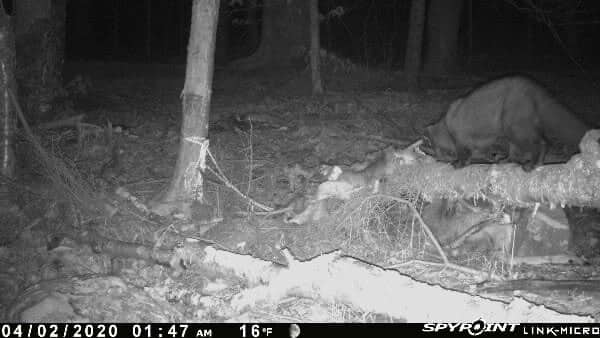
Pro tip: Deerskins serve multiple purposes, so save them and wrap your pile in them. The skins help convince the coyotes, and the frozen flesh helps protect the bait pile.
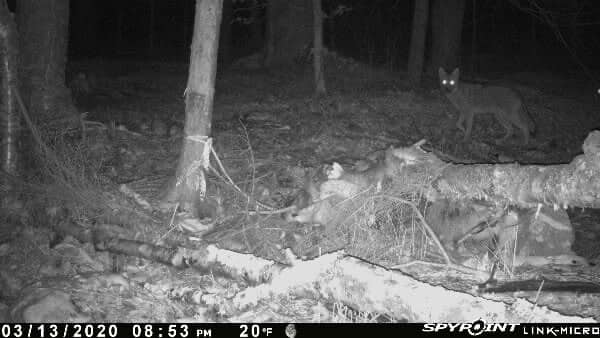
Add a camera to your coyote bait pile.
A cellular game camera will let you know when your pile is being visited and, more importantly, by whom. While it can be used as a real-time burglar alarm or help you pattern the visits being made, it does have a few easily fixable drawbacks.
- It can spook coyotes. Even the faintest glow of the shutter’s IR light or softest click can make a coyote bolt. Most won’t go more than a few yards away before returning, but if it happens every time they near the pile, it could drive them off permanently. The fix here? Set the timer to allow no more than one photo every 5 minutes.
- The cold can sap cheap batteries. It cant be said too often; set your pile and never go back to it except to pick up a dead coyote. Use high-quality lithium batteries where appropriate.
- Squirrels, birds, and even mice will set off the camera too. You usually get a package deal with cellular cameras. These deals can give you 100 to 200 free photos a month. If you are not careful, they will all be daytime photos of crows and nighttime images of mice racing around your set. To avoid this, reduce the camera’s sensitivity. Going from high sensitivity to medium setting should help, but even at the lowest setting will pick up coyotes and foxes.
- Your camera will need as clear and unobstructed shot. Set it at the right height and make sure any branches, brush, or twigs are cleared out of the way. Also, make sure to remove anything the wind may move around—a single twig can send many false alarms to your phone.
Where is the absolute best place to shoot a coyote? Don’t know? Then read this article on where to place your round to put a coyote down.
Scatter free meals to add confidence when coyote baiting.
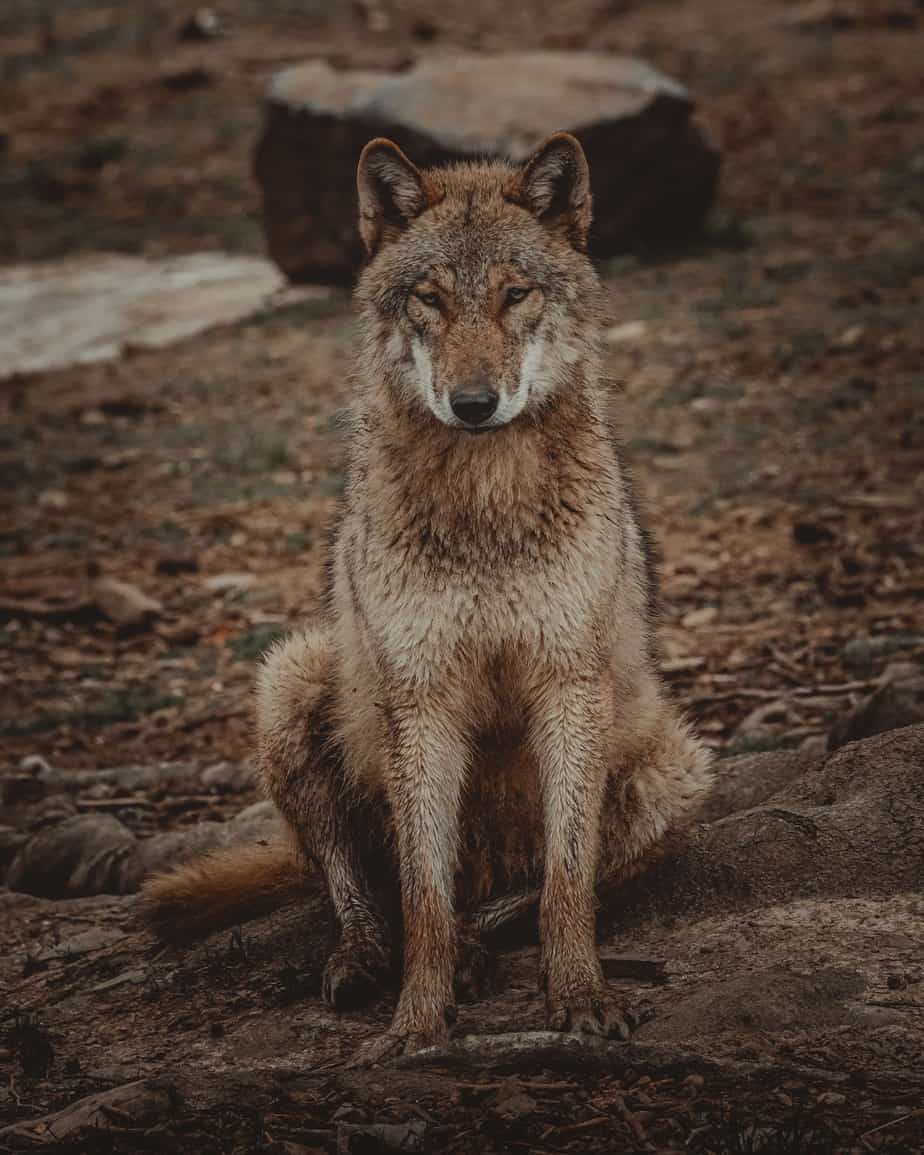
No matter which coyote bait pile method you use, scattering some morsels around the pile will help make the coyote feel more confident when reaching the actual pile.
Deer scraps are fine, but confidence strips that include “fishy” treats, like shrimp, add a tempting scent that has often set my bait piles on fire, luring predators in much faster than deer-only sets. If you are afraid that coyotes won’t come to your bait pile because they’ve been shot at them before, read my, The Truth About Educated Coyotes article.
If your coyote bait will sitting in an area with heavy snow, I recommend using a coyote lure you can smear on tree limbs and other items that won’t get buried under the snow and ice.
Dunlap’s Hellfire Long Call Smear is skunk in a bottle. It works every season for me, even though I’ve never even seen a skunk where I hunt. Great stuff!
Now, stay away from you coyote bait pile.
Once your bait and camera are set, don’t go near it again, except to recover a downed animal. Let it quietly sit for as long as it takes to start attracting coyotes. Look, it may be two weeks before you see activity, but worrying you haven’t set the pile upright and trying to rework it or add bait to it will only splash new doses of your scent all over the place. Just be patient. If there are coyotes around, they will find your pile.
There is only one other reason to get anywhere near your coyote bait pile, heavy snow. While the stench always finds a way to work itself up and out of even the heaviest snowfalls, you can reduce the time it takes for coyotes to find it.
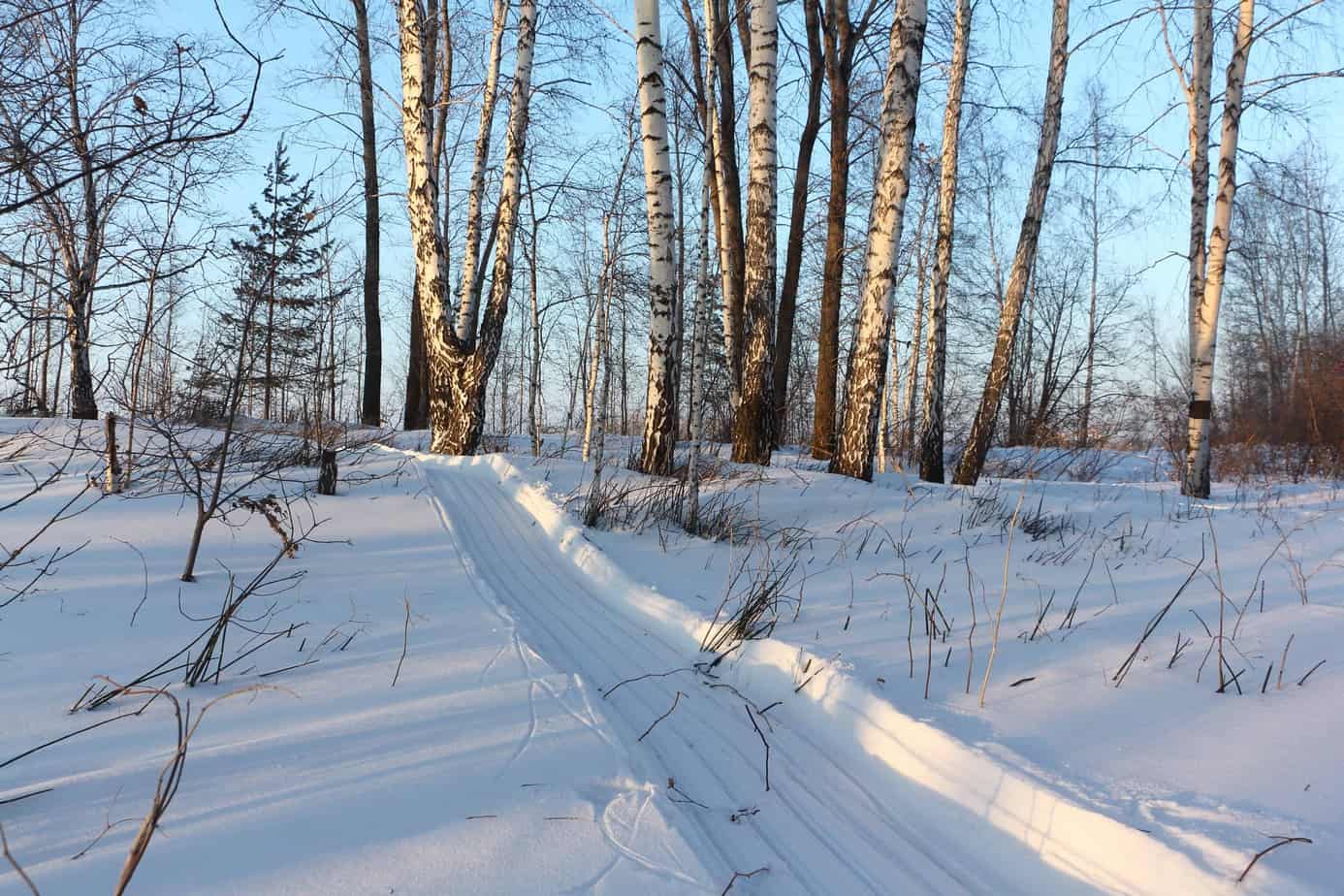
It’s time for a short snowmobile ride! From the road closest to your pile, start near one end of the field and use your snowmobile to create a nice curvy path. Then, hug the edge of the woodline and cut back to the road at the opposite end of the field. Plowed roads get heavy predator travel in rural areas. But, if they find an easy way to scout inside a field quickly, they will take it.
If you don’t have a sled, snowshoes will work just as well, especially after the deer have helped break the trail even more for you.
Interested in a quick course on how to track a wounded coyote? Read this article on how to track a wounded predator.
Who is visiting your coyote bail pile?
There are two types of coyotes you’ll catch visiting your bait pile; residents and transients.
Residents consider the location your placed your bait pile in to be their territory. They’ll visit it more than once. They will make their approach less cautiously. Their visits will last longer, they’ll eat more, and they will stay closer to the pile while resting.
Transients are coyotes in search of their territory. Transients get treated and act like trespassers. They will be very cautious during each approach. Their heads will be on swivels, and they will be quick to grab a bite and retreat a pace before consuming what they caught. The single click of a game camera can drive them away, perhaps for good.
If you set the pile up to remove unwanted local coyotes, there’s no need to worry you will attract coyotes from other more distant areas.
https://www.mossyoak.com/our-obsession/blogs/deer/deer-carcass-disposal-how-why-and-why-not
Calling near a coyote bait pile can increase your success.
Calling near your coyote bait pile is a great idea. Even if your stand is empty, there’s a good chance you’ll catch a late-arriving coyote. Coyotes that finally show up to investigate the source of your calls will poke around and possibly discover your bait pile.
If you are targeting hungry coyotes, check out https://thepredatorhunter.com/how-to-master-the-best-closed-reed-coyote-call/.
You can also call near bait that has already been found and partially consumed. A simple coyote vocalization may bring a resident coyote back to defend its food source in these situations.
A bit of effort, but nothing beats a perfect coyote bait pile.
A perfect coyote bait pile takes some scouting, planning, and waiting-but it yields unbelievable results. So start your planning today, and reap your harvest during the next coyote hunting season.

